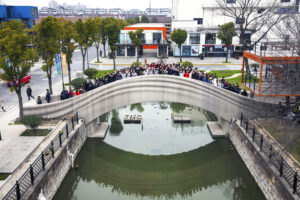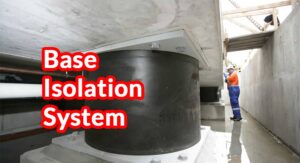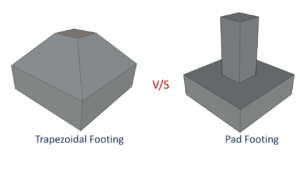
What Is Canal? Classification of Canals based on Different Factors

What is Canal?
A canal is an artificial waterway. The word “canal” originates from the Old French word chanel, which means “channel.” Sometimes it is also known as navigation.
In ancient time, A canal is used to connect waterfalls with the intention of shortening routes. Now it is constructed to allow the passage of boats or ships inland or to convey water for irrigation, human-made strip of water used for irrigation or boat access to a more significant body of water.
A canal plays a vital role when it comes to transportation and global commerce. We use the canal for irrigation, land drainage, urban water supply, hydroelectric power generation, transportation of cargo and people, power generation, the canal is also used to connect industrial centers with ports to speed movement of raw materials. Water filled canals at high levels can deliver water to any place where there is a water crisis. However, Canals weaken the foundation of the dam.
Classification of Canals based on Different Factors
Canals are classified into different types based on factors which are as follows :
- Based on the nature of the supply source
- Based on functions
- Based on the type of boundary surface soil
- Based on the financial output
- Based on discharge
- Based on canal alignment
Based on the Nature of Supply Source
- Permanent Canal
- Inundation Canal
1. Permanent Canal
A Permanent canal is a type of canal in which water is available throughout the year. This type of canal is generally directed from a permanent source of supply water bodies. Several Permanent hydraulic structures are constructed in this type of canal for water regulation and distribution. A Permanent canal can also be called as a perennial canal.
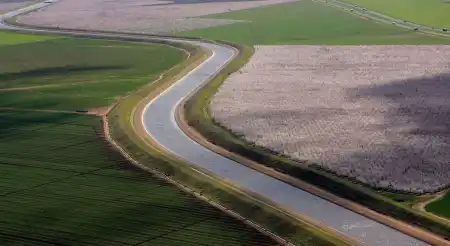
2. Inundation Canal
Inundation canal is a type of canal in which water is available only during the flood periods. These type of canals are taken off from rivers to control the water level in rivers during floods. A canal head regulator is provided to regulate the flow into the canal.

Based on Functions of Canal
- Irrigation canal
- Power canal
- Feeder canal
- Carrier canal
- Navigation canal
1. Irrigation canal
A canal aligned along the boundaries of cultivatable areas in order to supply water for the purpose of agriculture is said to be an irrigation canal.

2. Power canal
A canal constructed especially for the generation of hydraulic power is termed as power canal.
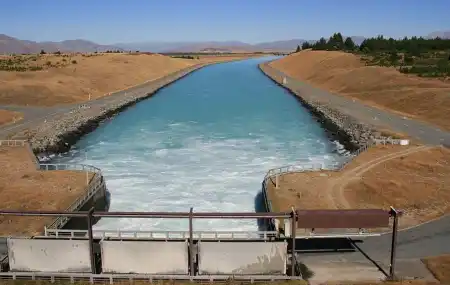
3. Feeder canal
As the name says, a feeder canal is constructed to feed two or more other canals or branch canals.

4. Carrier canal
A carrier canal is multi-function canal which serves the purposes of both irrigation canal and feeder canal. It means the carrier canal feeds the other canals as well as provides water for direct irrigation.

5. Navigation canal
A canal which is constructed especially for navigational purposes is known as navigation canal. The water level required in a navigation canal is generally a lot higher to accommodate large ships, vessels, etc.

Based on Type of Boundary Surface of Canal
- Alluvial canal
- Non-alluvial canal
- Rigid Surface canal
1. Alluvial canal
If the canal is excavated in alluvial soils such as silt, sand, gravel, etc. then it is said to be an alluvial canal.

2. Non-alluvial canal
If the boundary surface of the canal is of non-alluvial soils such as loam, clay, rock, etc. then it is said to be a non-alluvial canal.

3. Rigid Surface canal
Rigid surface canals also come under non-alluvial canals but here the boundary surface of the canal is lined artificially with a hard layer of lining material such as cement, concrete, stones, etc.

Based on Financial Output
- Protective canal
- Productive canal
1. Protective Canal
Protective canals are relief work projects which are constructed to protect a particular area from the shortage of water. The main objective of a protective canal is to fulfill the requirements of cultivators during the period of famine.

2. Productive Canal
Productive canals are those which will produce enough revenue for its maintenance and running costs and also to recover the initial investment made on the construction of the canal. It is said to be good if it recovers 6% of its initial investment per annum.

Based on Discharge
- Main canal
- Branch canal
- Major distributary canal
- Minor distributary canal
- Field canal

1. Main canal
The main canal takes off directly from a river or reservoir. It carries water in large amounts to feed the branch and distributary canals. Due to conveying of very high discharge through the main canal it is not recommended to do direct irrigation from it.
2. Branch Canal
The branch canal takes off from main canals at regular intervals. These canals supply water to major and minor distributary canals. The discharge of the branch canal is generally over 5 m3/sec. In the case of branch canals also, direct irrigation is not recommended unless their water carrying capacity is very low.
3. Major Distributary Canal
Major distributary canal takes off from the branch canal or in some cases from the main canal. They supply water to minor distributaries and field channels. A canal is said to be major distributary when its discharge lies between 0.25 to 5 m3/sec.
4. Minor Distributary Canal
Minor distributary canal takes off from major distributaries and sometimes directly from branch canals depending upon the discharge of canals. Their discharge is generally below 0.25 m3/sec. These canals supply water to the field channels.
5. Field Channels
Field channels also known as watercourses are small channels excavated by cultivators in the irrigation field. These channels are fed by the distributary canals and branch canals through canal outlets.
Based on Canal Alignment
- Ridge canal
- Contour canal
- Side-slope canal
1. Ridge Canal
A canal aligned along the ridgeline or watershed line of an area is said to be ridge canal or watershed canal. Since it is running at the peak altitude of the area, irrigation on both sides of the canal up to a larger extent of the area is possible. There is no interception of natural drains on ridge lines hence, no cross drainage works are required for this type of canal.

2. Contour Canal
A canal aligned roughly parallel to the contours of the area is called a contour canal. This type of canal can be seen in hilly regions. Since it is parallel to the contour line, the ground on one side of the canal is higher and hence irrigation is possible only on the other side of the canal. A contour canal has to pass the drainage and hence cross drainage works are required to be provided.

3. Side-slope Canal
A canal aligned nearly perpendicular to the contour of the area is called a side-slope canal. It is located neither on the ridgeline nor on the valley line but is approximately in between them. It is parallel to the natural drainage line and hence no cross drainage works are required. The bed slope of side slope canal is very steep.


